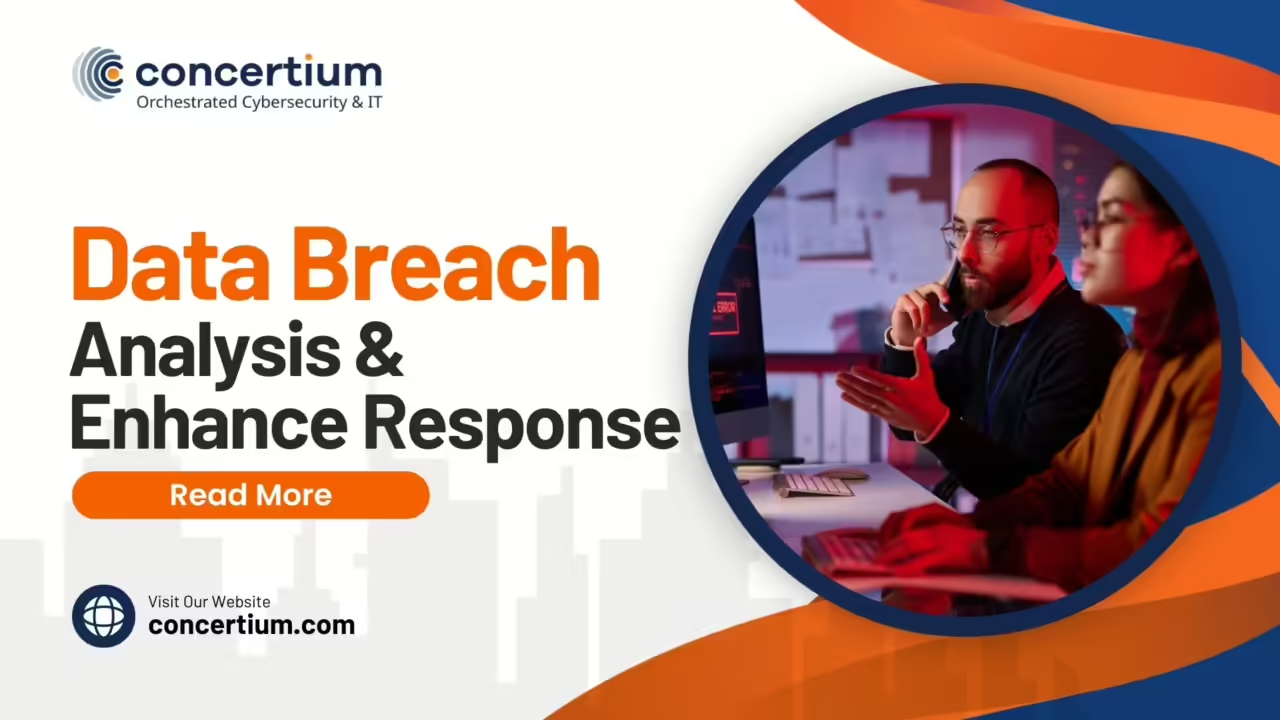Breaches and data compromises are a pressing concern for organizations across all sectors. Breach analysis plays a critical role in identifying, managing, and mitigating the damage caused by these incidents. Understanding the fundamentals of breach analysis is essential for protecting sensitive data and maintaining the integrity of information security.
Data Breach Analysis
Breach analysis refers to the comprehensive process of investigating and addressing the impact of a data breach. This involves several key steps, including identifying the breach, containing its effects, assessing the damage, and implementing corrective measures. Effective breach analysis helps organizations understand the scope of the breach, secure compromised data, and prevent future incidents.
The Breach Analysis Process
Initial Detection and Identification
The first step in breach analysis is the initial detection and identification of the breach. This involves recognizing the signs that a breach has occurred, which can include unusual system activity, unexpected changes in network traffic, or alerts from security tools. Modern organizations often rely on advanced monitoring systems and intrusion detection tools to identify potential breaches in real-time.
Early detection is crucial because it allows organizations to respond quickly and minimize the damage. Common methods for detecting breaches include monitoring logs, employing security information and event management (SIEM) systems, and conducting regular security audits. Once a potential breach is detected, the next step is to identify its scope and nature. This involves determining which systems were affected, what data was compromised, and how the breach occurred.
Containment and Mitigation
After detecting and identifying a breach, the focus shifts to containment and mitigation. Containment involves isolating the affected systems to prevent the breach from spreading further. This may include disconnecting compromised systems from the network, disabling affected user accounts, or halting specific processes.
Mitigation involves addressing the vulnerabilities that allowed the breach to occur and taking steps to minimize its impact. This can include applying security patches, changing passwords, and enhancing security controls. Effective mitigation strategies help prevent further exploitation of vulnerabilities and reduce the overall damage caused by the breach.
Assessment and Investigation
Once containment and mitigation measures are in place, the next step is to conduct a thorough assessment and investigation. This involves evaluating the extent of the breach, including the volume and type of compromised data. Understanding the impact of the breach on affected individuals and the organization is crucial for developing an effective response strategy.
The investigation process typically includes analyzing system logs, interviewing key personnel, and reviewing security controls. The goal is to identify the root cause of the breach, understand how the attackers gained access, and determine what changes are needed to prevent similar incidents in the future. Investigations should be conducted in a systematic and detailed manner to ensure all aspects of the breach are addressed.
Notification and Communication
Notification and communication are critical components of breach response. Organizations are often required by law to notify affected individuals and regulatory authorities about the breach. Effective communication involves providing clear and accurate information about the breach, including what happened, what data was compromised, and what steps are being taken to address the issue.
Notification should be timely and transparent to maintain trust and credibility with affected individuals and stakeholders. Communication plans should include guidelines for notifying internal teams, customers, partners, and regulatory bodies. Providing support and guidance to affected individuals, such as offering credit monitoring services, can also help mitigate the impact of the breach.
Remediation and Prevention
The final step in the breach analysis process is remediation and prevention. Remediation involves implementing corrective actions to address the vulnerabilities that led to the breach and restore affected systems to normal operation. This may include updating security policies, enhancing access controls, and conducting additional training for employees.
Prevention focuses on strengthening security measures to prevent future breaches. This involves reviewing and updating security protocols, conducting regular risk assessments, and staying informed about emerging threats. By implementing robust security practices and learning from past incidents, organizations can better protect themselves against future breaches.
Data Breach Response
Creating an Effective Response Plan
An effective breach response plan is essential for managing and mitigating the impact of a data breach. This plan should outline the steps to be taken in the event of a breach, including roles and responsibilities, communication protocols, and procedures for containment, investigation, and remediation.
Key components of a breach response plan include:
- Roles and Responsibilities: Define who will be involved in the response, including the incident response team, IT personnel, legal and compliance experts, and communication staff.
- Detection and Containment Procedures: Establish procedures for detecting, containing, and mitigating the breach.
- Communication Protocols: Outline how and when to notify affected individuals, regulatory authorities, and other stakeholders.
- Remediation and Recovery: Detail the steps for addressing vulnerabilities, restoring affected systems, and preventing future incidents.
Data Breach Response Activities
Data breach response activities are critical for managing the breach and minimizing its impact. These activities include:
- Incident Assessment: Evaluate the severity of the breach and its potential impact on the organization and affected individuals.
- Containment: Implement measures to isolate and secure affected systems and data.
- Communication: Notify affected individuals and regulatory bodies in accordance with legal requirements and best practices.
- Investigation: Conduct a thorough investigation to determine the cause of the breach and identify any additional vulnerabilities.
- Remediation: Take corrective actions to address the vulnerabilities and restore normal operations.
- Post-Incident Review: Analyze the breach response to identify lessons learned and make improvements to security policies and procedures.
Handling Compromised Data
Handling compromised data involves managing and securing data that has been exposed or accessed during the breach. This includes:
- Assessing the Risk: Determine the level of risk associated with the compromised data, including the potential for identity theft, financial loss, or other adverse effects.
- Securing the Data: Implement measures to protect the compromised data, such as encrypting sensitive information or restricting access.
- Providing Support: Offer support to affected individuals, including credit monitoring services or guidance on how to protect themselves from potential misuse of their data.
Breach Analysis Team
Roles and Responsibilities
A breach analysis team is responsible for managing and addressing the breach. The team typically includes members from various departments, each with specific roles and responsibilities:
- Incident Response Team: Handles the technical aspects of the breach, including detection, containment, and remediation.
- Legal and Compliance Experts: Ensure that the response complies with legal and regulatory requirements and manage communication with regulatory bodies.
- Communication Staff: Develop and execute communication plans to notify affected individuals and stakeholders.
- IT and Security Personnel: Assess and address vulnerabilities, restore affected systems, and enhance security measures.
Collaboration and Communication
Effective collaboration and communication within the breach analysis team are crucial for a successful response. Team members must work together to share information, coordinate actions, and ensure that all aspects of the breach are addressed. Regular meetings and updates help keep the team informed and aligned throughout the response process.
Detailed Insights and Best Practices in Breach Analysis
Data Breach Analysis
Analyzing the Breach
The analysis of a data breach is a crucial step in understanding its impact and preventing future incidents. This process involves examining the breach to determine how it occurred, what data was compromised, and the overall effect on the organization and its stakeholders.
To analyze a breach effectively, organizations should employ several techniques and tools:
- Forensic Analysis: Use digital forensics to investigate the breach. This includes analyzing logs, system images, and other digital evidence to trace the attacker’s steps and identify how they accessed the system.
- Root Cause Analysis: Identify the root cause of the breach. This could be due to vulnerabilities in software, weak security protocols, or human error. Understanding the root cause helps in addressing the underlying issues and preventing similar breaches in the future.
- Impact Assessment: Assess the impact of the breach on the affected data and systems. Determine which data was compromised, including personally identifiable information (PII), financial information, or other sensitive data. Evaluate how the breach affects operations, compliance, and reputation.
By employing these methods, organizations can gain a comprehensive understanding of the breach and develop effective strategies for remediation and prevention.
Documenting the Breach
Documenting the breach is essential for maintaining a detailed record of the incident and supporting future analysis and reporting. Comprehensive documentation should include:
- Incident Details: Record the date and time of the breach, how it was detected, and the initial response actions taken.
- Scope and Impact: Document the extent of the breach, including the affected systems, data types, and the number of individuals impacted.
- Response Actions: Outline the steps taken to contain and mitigate the breach, including any communication with affected parties and regulatory bodies.
- Lessons Learned: Capture insights gained from the breach, including what went well and areas for improvement. This information is valuable for refining response plans and enhancing security measures.
Effective documentation not only supports compliance with regulatory requirements but also helps organizations learn from their experiences and improve their breach response strategies.
Breach Prevention Strategies
Risk Assessment and Management
Risk assessment and management are critical components of a comprehensive breach prevention strategy. Regularly assessing risks helps organizations identify potential vulnerabilities and implement measures to address them. Key steps include:
- Vulnerability Scanning: Conduct regular scans to identify vulnerabilities in systems and applications. Use automated tools to detect weaknesses and ensure timely patching.
- Penetration Testing: Perform penetration tests to simulate attacks and identify potential security gaps. This helps in evaluating the effectiveness of existing security measures.
- Risk Analysis: Analyze risks associated with different types of data and systems. Prioritize risks based on their potential impact and likelihood, and allocate resources accordingly.
By proactively identifying and addressing risks, organizations can strengthen their defenses and reduce the likelihood of future breaches.
Security Measures and Safeguards
Implementing robust security measures and safeguards is essential for preventing data breaches. Key measures include:
- Access Controls: Implement strong access controls to limit who can access sensitive data. Use role-based access control (RBAC) and multi-factor authentication (MFA) to enhance security.
- Encryption: Encrypt sensitive data both in transit and at rest. This protects data from unauthorized access and reduces the impact of a breach if it occurs.
- Security Policies: Develop and enforce comprehensive security policies and procedures. Ensure that policies address data protection, incident response, and employee responsibilities.
- Regular Updates: Keep software, systems, and security tools up to date with the latest patches and updates. Regular updates help address known vulnerabilities and strengthen defenses.
By implementing these security measures, organizations can enhance their overall security posture and reduce the risk of data breaches.
Employee Training and Awareness
Employee training and awareness are crucial for preventing breaches caused by human error or social engineering attacks. Key components of a training program include:
- Security Awareness Training: Provide regular training on security best practices, including recognizing phishing attempts, handling sensitive data, and following security protocols.
- Incident Response Training: Educate employees on their roles in the event of a breach, including how to report suspicious activity and follow response procedures.
- Simulated Attacks: Conduct simulated phishing attacks and other security exercises to test employee awareness and response. Use the results to identify areas for improvement in training programs.
By promoting a culture of security awareness, organizations can reduce the likelihood of breaches caused by human factors and improve their overall security posture.
Regulatory Compliance and Best Practices
Compliance with Data Protection Laws
Compliance with data protection laws is essential for managing data breaches and avoiding legal repercussions. Key regulations include:
- General Data Protection Regulation (GDPR): Requires organizations to notify affected individuals and regulatory authorities within 72 hours of discovering a breach. GDPR also mandates comprehensive breach response and reporting procedures.
- Health Insurance Portability and Accountability Act (HIPAA): Governs the protection of health information in the United States. HIPAA requires timely breach notification to affected individuals and the Department of Health and Human Services (HHS).
- California Consumer Privacy Act (CCPA): Provides rights to California residents regarding their personal information and requires organizations to notify individuals in the event of a breach.
Understanding and adhering to these regulations helps organizations ensure compliance and manage data breaches effectively.
Best Practices for Breach Analysis
Implementing best practices for breach analysis can improve an organization’s response and prevention efforts. Key best practices include:
- Regular Risk Assessments: Conduct regular assessments to identify and address potential vulnerabilities. Use the results to inform security measures and response plans.
- Incident Response Planning: Develop and maintain a detailed incident response plan that outlines procedures for detecting, containing, and managing breaches. Regularly test and update the plan to ensure its effectiveness.
- Continuous Monitoring: Implement continuous monitoring of systems and networks to detect potential breaches early. Use automated tools and threat intelligence to stay informed about emerging threats.
- Post-Incident Reviews: Conduct thorough reviews after a breach to identify lessons learned and areas for improvement. Use these insights to enhance response plans and security measures.
By following these best practices, organizations can better prepare for and respond to data breaches, protecting sensitive information and maintaining compliance.
FAQs About Breach Analysis and Response
1. What is a security incident, and how does it relate to breach analysis?
A security incident is any event that threatens the confidentiality, integrity, or availability of data. It can include data breaches, cyberattacks, or other security events. Breach analysis is the process of investigating such incidents to understand their impact, manage compromised data, and enhance overall information system security.
2. How should organizations handle compromised data?
Handling compromised data involves assessing the extent of the breach, securing the data, and notifying affected individuals. Key steps include conducting data breach investigations, implementing security safeguards, and providing support such as credit monitoring services. Organizations should follow breach notification requirements and ensure compliance with relevant regulations.
3. What are the steps in a data breach response plan?
A data breach response plan should include:
- Detection and Identification: Recognize and confirm the breach.
- Containment and Mitigation: Isolate affected systems and minimize damage.
- Assessment and Investigation: Analyze the breach to understand its impact.
- Notification: Inform affected individuals and regulatory authorities.
- Remediation: Address vulnerabilities and restore normal operations.
- Post-Incident Review: Evaluate the response and update policies.
4. How do privacy and security intersect in breach analysis?
Security and privacy are closely linked in breach analysis. Privacy groups focus on protecting personal data and ensuring compliance with privacy laws, while security officers work to prevent and respond to security incidents. Both aspects are crucial in managing and analyzing data breaches effectively.
5. What is the role of the breach analysis team (BAT)?
The breach analysis team (BAT) is responsible for managing and investigating breaches. It typically includes members from IT, security, legal, and communications departments. The team coordinates actions, assesses the breach’s impact, and develops strategies for response and prevention.
6. What are the key components of a breach notification?
Breach notification should include:
- Details of the breach, including what data was compromised.
- Actions taken to address the breach and mitigate its impact.
- Information on how affected individuals can protect themselves.
- Contact information for further assistance and updates.
7. How can organizations prevent future data breaches?
Organizations can prevent future breaches by:
- Conducting regular risk assessments and vulnerability scanning.
- Implementing robust security measures such as encryption and access controls.
- Providing employee training on security best practices.
- Maintaining up-to-date security policies and procedures.
8. What are the data breach notification requirements for government websites?
Government websites must adhere to specific breach notification requirements, which often involve notifying affected individuals and regulatory bodies promptly. These requirements may vary by jurisdiction and the type of data involved.
9. How does data loss impact breach response efforts?
Data loss can complicate breach response efforts by increasing the complexity of data recovery and potentially affecting business operations. Organizations should have a response checklist and recovery plans to address data loss effectively.
10. What role does the HHS Privacy Incident Response Team (PIRT) play in breach analysis?
The HHS Privacy Incident Response Team (PIRT) handles breaches involving health information. They provide guidance on breach notification, investigation, and mitigation for breaches affecting protected health information (PHI).





